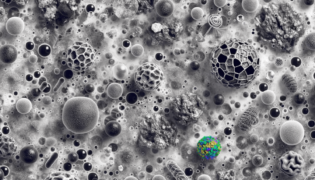Skin tags bleed significantly when cut off because they have an abundant blood supply due to numerous blood vessels in their structure. Improper removal can lead to excessive bleeding and potential complications.
Skin Tags and Blood Supply
Skin tags, also known as acrochordons, consist of fibrovascular tissue, which includes a dense collection of blood vessels. This, combined with their vulnerable location on areas such as the neck, eyelids, and armpits, makes them prone to bleeding when cut or snagged on clothing or jewelry.
Skin Tags Remover
At Skincare Logix, a blog about skincare, we recommend seeking the help of a medical professional to remove skin tags safely. Healthcare providers use various methods for skin tags removal, such as cauterization, cryotherapy, and surgical removal, that minimize bleeding and risk of infection.
Precautions for Safe Skin Tags Removal
It is important to avoid attempting at-home skin tag removal, as improper techniques can lead to complications. If you still want to try over-the-counter skin tags remover products, ensure that they are FDA-approved and follow the instructions carefully. Keep the area clean and sanitized to prevent infection.
Why Do Skin Tags Bleed So Much When Cut Off?
Skin tags are small, soft, non-cancerous growths on the skin, frequently appearing in areas where skin rubs against skin, like the armpits, groin, and neck. They can bleed profusely when cut off due to their fibrovascular nature, which means they house many blood vessels within their structure.
What Causes Skin Tags?
The exact cause of skin tags is unknown, but the friction caused by skin rubbing against skin is believed to be a primary contributing factor. Other factors that may increase the likelihood of developing skin tags include:
- Genetics
- Obesity
- Hormonal fluctuations
- Diabetes
- Age
Risks of DIY Skin Tag Removal
At Skincare Logix, a blog about skincare, we urge our readers to avoid trying to remove skin tags on their own. DIY techniques, such as cutting or tying off skin tags, carry a significant risk of infection, scarring, and excessive bleeding. Additionally, improper removal can cause irritation or even the regrowth of skin tags.
Professional Skin Tag Treatments
It is always advisable to consult a doctor or dermatologist for safe skin tag removal. Medical professionals typically use one of the following methods to remove skin tags:
- Cauterization: Burning the skin tag with an electric current to close the blood vessels and minimize bleeding while removing the tag.
- Cryotherapy: Freezing the skin tag using a cold substance (e.g., liquid nitrogen) before removal, minimizing the blood flow to the area.
- Surgical Removal: Surgically excising the skin tag with a scalpel or scissors under sterile conditions and sometimes using local anesthesia.
Natural Solutions and Prevention
Although there are natural remedies available online, many of these approaches lack scientific backing and could potentially cause harm. To prevent skin tags, maintain a healthy lifestyle by incorporating a balanced diet, regular exercise, and proper
Frequently Asked Questions
We understand that you may still have questions about skin tags and their removal, so we’ve compiled a list of common questions and their answers, provided in NLP style, to help address any remaining concerns.
1. Are skin tags dangerous or cancerous?
No, skin tags are benign (non-cancerous), harmless growths. However, if you notice sudden changes in appearance or color, it’s important to consult a dermatologist, as these changes could indicate a more serious skin condition.
2. Can skin tags become infected?
Yes, if skin tags are irritated, cut, or rubbed excessively, they can become inflamed, infected, or painful. It is essential to avoid home removal techniques, as improper removal raises the risk of infection significantly.
3. How long does it take to heal after skin tag removal?
The healing time varies depending on the removal method used and the individual’s overall health. Generally, skin tag removal sites heal within a few days to two weeks. For a quicker recovery, follow the post-treatment instructions provided by your healthcare professional.
4. Is skin tag removal painful?
Professional skin tag removal is typically not painful, as most procedures employ a local anesthetic to numb the area. However, after the anesthetic wears off, some minor discomfort, itching, or redness may be experienced.
5. Will my insurance cover skin tag removal?
Insurance coverage for skin tag removal varies across policies. In most cases, insurance covers the procedure only if it is deemed medically necessary, such as when a skin tag is irritated, infected, or located in a problematic area. Consult with your insurance provider and healthcare professional for more information.




















